
Dagestanis
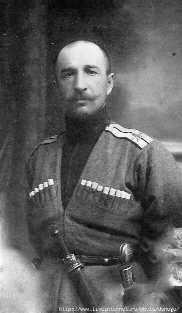
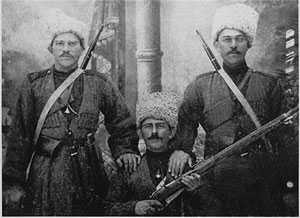
Dagestanis prior to WWI.
There is no one Dagestani people: it is a term from Turkish meaning "mountain land". Most inhabitants were members of Caucasian tribes (including the Avars, Dragins and Lezgins) or Turkic peoples (including Kumyks, Nogais, Azeris). These groups are almost exclusively Moslem. Only a bit over 10% of the population were Russians.
For the purposes of this page, Dagestanis means the Moslem Caucasian tribesmen.
1st and 2nd Dagestani Horse Regiments
The Imperial Army had two Dagestani units in 1917, and we have assumed that the Dagestanis carried their uniforms into the Civil War (admittedly without any great evidence).
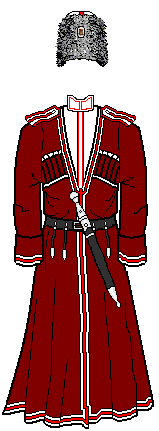 |
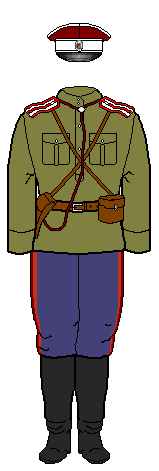 |
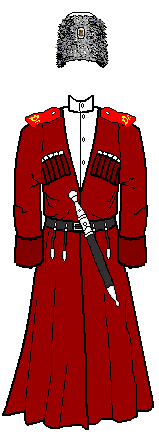 |
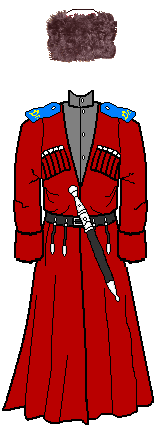 |
| Officer: full dress uniform 1st Dagestan Regiment |
Officer: formal dress, non-Cherkeska variant |
Trooper: full dress uniform 1st Regiment | Trooper: full dress uniform 2nd Regiment |
The dress uniform cherkeska,of the Dagestanis was apparently a brick red colour. This is actually where the red clad Cossacks of popular imagination arose, via the red dress uniform of the Cossack escort to the Tsar.
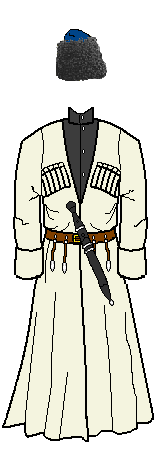 |
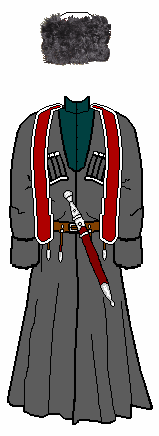 |
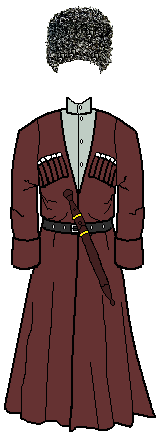 |
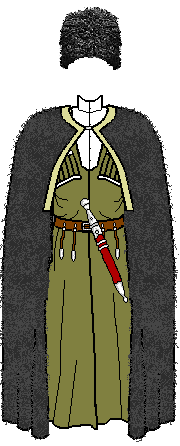 |
| Trooper: field dress |
Trooper: with bashlyk | Trooper | Trooper: with burka and WWI-era khaki cherkeska |
It's doubtful if the rank and file paid a lot of attention to formal uniforms.
Uniform Details
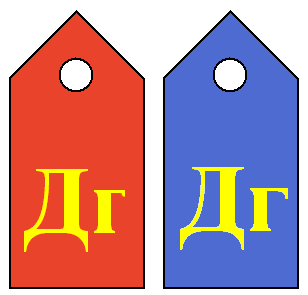 |
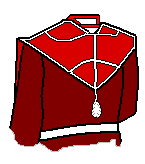 |
| Shoulderboards: privates of 1st and 2nd Regiments | Bashlyk, with white piping. Most were probably not piped. |
The first Dagestani Regiment had red as its colour. Knotel shows the buttons and officer lace for it as silver. That means officers cipher and rank markings would be in gold. The cipher is the letters Дг (that is Dg). Khaki shoulderboards for rankers would be stencilled in light blue.
The second regiment, formed during that war and serving in the Savage Division, had light blue instead on its shoulderboards, though it retained red for the other features. With the addition of a second regiment it would make sense that they added numbers to distinguish the units as they did in similar cases, but we have no evidence either way.
The hat top for the 1st Regiment was white, with red cross cords for officers. Moslem troops, like most of the Dagestanis, were unlikely to wear a cross though, so it was probably only Russian officers that wore this. We don't know the hat colour of the Savage Division regiment.
History in the RCW
A Dagestan Soviet government was formed soon after the October Revolution and then a four-way struggle ensued between it, pro-White elements, Terek Cossacks and the Dagestani mountain peoples. Elements of the WWI Savage Division were important in initially organising for the natives. The Whites won eventually when Denikin turned up at the end of the 2nd Kuban March, but the area was never properly pacified.
A Dagestan Horse Brigade was formed in the AFSR around the 1st and 2nd Dagestan Horse Regiments, and placed with the Forces of the Northern Caucasus. Presumably this was in early 1919. From May 1919 Dagestani rifle battalions were formed, eventually numbering four, although they never grew very large. A light battery of five guns was also added.
In mid-October 1919 the Dagestani cavalry and part of the infantry had just been transferred to the Caucasian Army, to form part of the Combined Mountain Division along with an Ingush Horse Brigade and the 5th Horse Artillery Divizion,(the division also included the 3rd Ossetian and Karachay Horse Regiments, but they were absent).
2nd Dagestan Horse Regiment – 53 sabres
1st Dagestan Rifle Battalion of Imam Shamil' – 230 rifles, 4 MGs
2nd Dagestan Rifle Battalion – 36 rifles, 4 MGs (on the way)
The remainder of the infantry, which wasn't much, stayed as a brigade with the Forces of the Northern Caucasus,
4th Dagestan Rifle Battalion – 17 rifles
1st Detached Light Battery – 5 light guns
These units broke up in early 1920, and do not seem to have been reformed.
Dagestan was one of the last places to surrender to Soviet rule. The Dagestanis (and Chechens) fought a bitter campaign against the Red Army in 1920 and 1921. The Soviets sent in perhaps as many as 40,000 men, including quite a few elite units, with armoured cars and airplanes in support.
Similar Units
Dagestani
As noted above, there were small Dagestani Rifle Battalions. They presumably wore similar uniforms to the cavalry, except officer markings would be in silver. Shortages of native officers probably means they were led by non-Dagestani officers in Russian gymnastërkas. The attached artillery, both foot and horse, was almost certainly served by Russians, so would wear normal artillery uniforms.
In late 1919 there was a Dagestan Horse Divizion of 297 sabres and 3 MGs serving in the Trans-Caspian Detachment (in what is now Turkestan).
A Kumyk regiment was briefly formed in the AFSR. The Kumyks are a Turkic (rather than Caucasian) tribe mostly from the Dagestan area. It was brigaded with Chechens, rather than Dagestanis (Chechnya neighbours Dagestan).
During the Civil War the AFSR also included the reformed 83rd Dagestan Infantry Regiment, based on officers from the Imperial unit of that name. We believe this was a normal infantry unit, and not composed of mountaineers.
Other
The 1st Dagestan Horse Regiment shared their dress style and red shoulderboards and bashlyks with the Kuban Cossack regiments. Only the hat tops and bashlyk piping differ.
It seems that red shoulderboards with white as the second colour also was worn by the Circassian Regiment in the Savage Division – and the AFSR included Circassian and Karachay Regiments.
The light blue and white colour scheme of the 2nd Dagestani Horse Regiment is very similar to that of the Kabardians, discussed on their own page.
Flags
There is a picture of the Combined Mountain Division flying ordinary rectangular flags.
The 1st Dagestan Horse had a 1857 banner which would have been in no state to carry into battle. The 2nd Dagestan Horse had been awarded a Nikolai (in the non-Christian variant without the slogan and the icon) but it was never delivered.
There are a couple of flags associated with independent Dagestan for the period that could be used. The one on the left is for the "North Caucasian Emirate", used by opponents of the Volunteer Army, and on the right is the colours of Dagestan, with a Koranic slogan added for good measure.
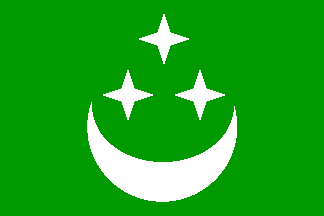
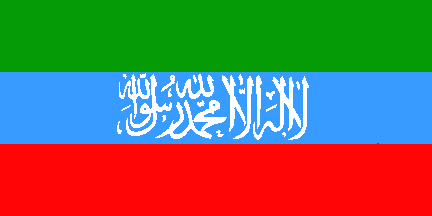
Sources
For the Dagestani opposition to Soviets:
The Last Ghazawat: the 1920-1921 Uprising by Marie Benningson Broxup, an article in The North Caucasus Barrier (Hurst & Co.) describes in some detail the Soviet suppression of Dagestan.
Caucasian Battlefields 1828-1921, by W. E. D. Allen and P. Muratoff (Cambridge, reprinted Battery Press) has a chapter on the fighting in Dagestan.
Photos
We have collected various period photos of mountaineers on a separate page.